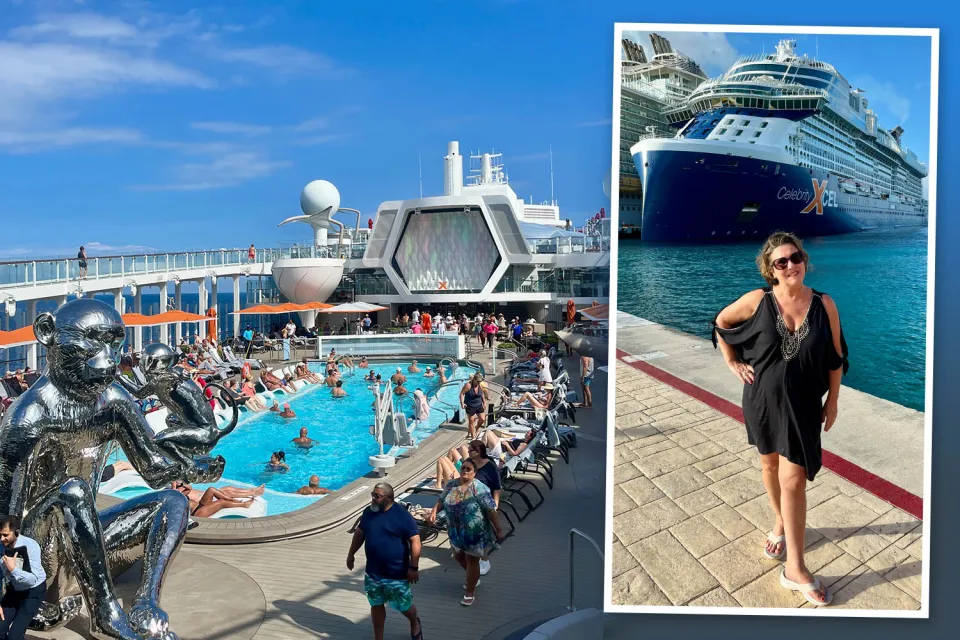Four of the new cruise ships that have launched this year from Virgin Voyages to Disney

A FLURRY of new cruise ships have taken to the ocean waves in recent weeks, giving cruise fans even more choice.
From the adult delights of Celebrity’s fifth Edge class ship, Xcel, and Virgin Voyages’ latest Brilliant Lady to the family- friendly fun onboard Star Princess and Disney Destiny, there is plenty to please all ages.

LISA MINOT takes a look at the latest liners to set sail.
CELEBRITY XCEL: I’m just back from a fantastic sailing exploring this lovely new ship and can say it is one of my favourites for adults who love a little bit of luxury in a relaxed setting.
The ship has seven reimagined spaces onboard.
Bazaar is a new multi-level space that transforms depending on the ship’s destinations.
While in the Caribbean, you can expect entertainment, food and crafts inspired by the tropical islands.
When it moves to the Mediterranean in summer 2026 it will reflect the European ports of call.
I loved the new Bora restaurant on the top deck beside the Roof Garden and the retro games in The Attic.
The main pool has had a real upgrade and keep an eye out for the PhotoBooth — it promises a lot more than just a selfie!
See celebritycruises.com.
VIRGIN BRILLIANT LADY: Virgin Voyages’ fourth ship set sail this autumn, adding to the line’s signature adult-only sophisticated cruises for party people.
The 2,770-passenger ship has had some enhancements over its siblings, including a larger pool and the new Roundabout enlarged atrium.
The ship is also the first in the fleet capable of transiting the Panama Canal, with some new cabin types having smaller balconies to accommodate it.
Other highlights include brand new shows, a new supper club with an interactive dinner-and-a-show experience and retro karaoke lounge with private booths.
See virginvoyages.com.
DISNEY DESTINY: Spider-Man swings off the side of Disney Cruise Line’s latest luxury liner — and that’s just the start of the fun onboard this family-friendly ship.
The 4,000-passenger vessel is the seventh in the fleet and the first to feature a new theme, with exclusive encounters with a host of Disney’s favourite heroes and villains and unique entertainment not found on its other ships.
In a departure from its previous cruise ships, the theming is more immersive, with a Marvel-inspired Grand Hall, new restaurant Pride Lands: Feast Of The Lion King — promising dinner and a show — and a new Broadway-style Hercules show.
There’s a new bar based on the Haunted Mansion theme park attraction, too.
See disneycruise.disney.go.com.

STAR PRINCESS: The second of Princess Cruises’ Sphere-class ships, Star Princess builds on the success of Sun Princess.
The 4,000-passenger liner features an expanded O’Malley’s Irish Pub, one of my favourite venues onboard the ship.
There’s more than 30 dining and drinking options, including a new expanded speciality dining restaurant Love By Britto.
The top deck features a new multi-sport court with facilities for pickleball and basketball as well as a splash pad.
New shows include the circus-themed Illuminate! and love story Meridian, both taking full advantage of the theatre’s in-the-round staging.
And the popular Dome entertainment venue, which transforms from day to night, plus the multi-level Piazza are both returning favourites.
See princess.com.


